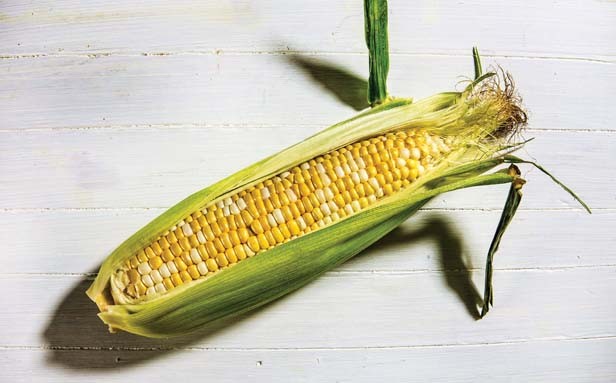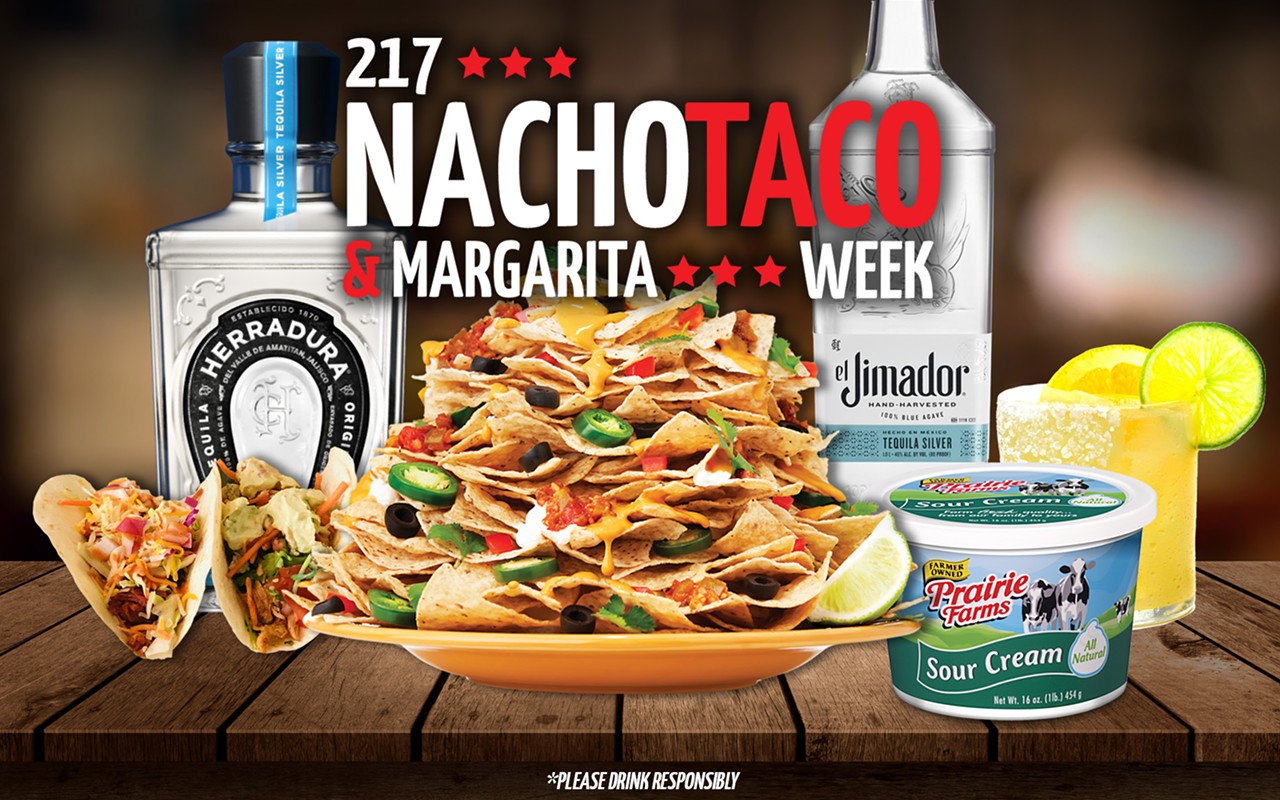It’s a natural for desserts, especially these days. Sweet corn used to be at its best when harvested young then cooked as quickly as possible. In my early years, my grandmother would put a pot of water on to boil as soon as my grandfather went to pick sweet corn for dinner, so that there would be as little time as possible between the picking and shucking to the platter of steaming corn on the cob on the table. For everyday dinners, we used our fingers, but for special occasions, my grandmother would break out sterling silver corncob holders. Regardless, there was a designated butter dish so that everyone could roll their ear of corn rather than awkwardly attempting to frost it with a butter pat and knife.
The urgency lessened once my grandfather began planting the first SUPERSWEET hybrid, Illini Super Chief (I’m not sure if that was its exact name, but it’s what my grandfather called it.) SUPERSWEET hybrids were first developed at the University of Illinois Urbana/Champaign by professor John Laughnan in 1953. But it took almost two decades for my grandfather, and the rest of the world, to catch on.
Sweet corn was not only sweeter, but it had a longer shelf life – i.e. stayed sweeter longer, factors that increased as newer hybrids became even sweeter and lasted longer.
That was the “good” news. The downside was that the hybridizers had ratcheted up the sweetness at the expense of “corny” flavor. These days I don’t want really young sweet corn. To get any corn flavor at all, the ears need to be mature, although if they are really old, there is enough conversion of their sugars to starch that they can be gummy. So it’s really back to the old story that the best sweet corn has a narrow window of perfection. We don’t have enough sunny areas on our property to grow some of the older pre-SUPERSWEET varieties, such as Country Gentleman or Evergreen. But I’d sure like to try them, if heirloom sweet corn becomes a “thing,” like other heirloom vegetables.
I’ve found that taking an extra step to lightly caramelize sweet corn, gives SUPERSWEET hybrid corn a depth of flavor that’s particularly good in dessert preparations. Here are two favorites. They’re good alone, but especially blow-your-mind wonderful to serve in tandem. Straining the flan custard certainly isn’t mandatory, but when serving them together, the contrasting unctuous flan and beignets with crunchy cornmeal and caramelized kernels knocks it out of the park.
Basic method for caramelizing sweet corn
Hold an ear of sweet corn at the top vertically and cut downward with a large straight-edged knife to remove the kernels, then use the blunt edge of the knife to scrape the cob for its juice and remaining bits of kernel. Each ear should yield approximately 3/4 cup.
Heat a large nonstick skillet over medium-high heat and add the kernels and juices. Stir constantly with a flat-edged wooden spoon or spatula until the liquid has evaporated and the kernels’ edges start to brown. The bottom of the skillet will get a sticky golden-brownish coating, the corn’s caramelizing sugars. Scrape it back into the kernels as you go.
Once the kernels’ edges are lightly browned, add a tablespoon or 2 of water to completely deglaze the skillet (mix in that caramelized stuff), then scrape the mixture from the skillet and cool to room temperature.
SWEET CORN FLANS
• Caramelized sweet corn from 2 ears of corn, approximately 1 1/2 c.
• 2/3 c. sugar
• 1/2 vanilla bean
• 3 c. half-and-half
• 8 egg yolks
• Pinch of salt
For garnish, optional
Raspberries, blackberries or blueberries, or a combination
Sugar
Preheat the oven to 325 F. Put the sugar into a medium to large saucepan. Split the half vanilla bean lengthwise, then with the tip of a sharp knife scrape the seeds into the sugar. Add the split vanilla pod, then rub the sugar and pod with your (clean) fingers to incorporate the sticky seeds into the sugar.
Add the half-and-half, the caramelized sweet corn and its liquids and stir to combine, bring the mixture to a simmer over medium heat, then remove from the stove and allow to come to room temperature.
Remove and discard the vanilla pod. Transfer the corn and cream mixture to an electric blender (preferred) or food processor. Process until the mixture is thoroughly puréed, then add the egg yolks and pinch of salt.
At this point, you can strain the mixture through a fine sieve for an especially velvety smooth texture, or leave it as is.
Divide the mixture between eight 4-ounce (1/2 cup) ramekins. (You may have enough for 1 or 2 more.) Put the ramekins in a baking dish (or dishes) big enough so the ramekins don’t touch each other. Pour simmering-hot water into the baking dish(es) to come between 1/3 to 1/2 way up the ramekins’ sides.
Bake for about 40 minutes, or until the custard is completely set. (The centers don’t jiggle when they’re wiggled.) Carefully remove the baking dish from the oven, and let the flans cool, still in the water, to room temperature. Cover each flan with plastic wrap and refrigerate. They can be made several days ahead of time at this point.
Prepare the berries by mixing with sugar to taste (how much depends on the berries’ sweetness and your individual taste), then letting them stand for at least half an hour to macerate.
Serve the flans chilled or at room temperature, garnished with a spoonful of berries. Makes 8-10.
DOUBLE CORN BEIGNETS
• 1 3/4 c. unbleached, all-purpose flour, plus additional for rolling out the dough
• 2/3 c. cornmeal, preferably stone-ground
• 1 1/2 T. baking powder, preferably Rumsford or another brand that doesn’t contain aluminum salts
• 1/2 tsp. salt
• 1/3 c. unsalted butter, softened
• 1/3 c. sugar, plus extra for coating the beignets
• 4 eggs
• 1 T. pure vanilla extract
• 2 T. milk or yogurt
• Caramelized sweet corn from 1 ear of corn, approximately 3/4 c.
• Oil for deep frying
Mix together the flour, cornmeal, baking powder and salt and set aside.
Cream the butter and sugar in the bowl of a mixer or another large bowl, then beat in the eggs until the mixture is light and fluffy. Stir in the vanilla and milk or yogurt, then add the dry ingredients a few spoonfuls at a time, just until combined. Stir in the sweet corn, being careful to not over mix. Cover the bowl and refrigerate several hours until cold and firm.
Turn the dough out onto a well-floured surface and dust the top with more flour. Pat or roll the dough until it’s approximately 3/4 inch thick, flouring as needed to prevent the dough from sticking.
Use a small round cutter (2 inches is ideal), to make the beignets, transferring them to a flour-dusted baking sheet, and rerolling/patting the dough to make as many as possible. Chill thoroughly again.
Heat the oil in a large, deep pot to 350 F, or until hot but not smoking. Put a cup or more of sugar into a large brown paper bag. Turn the oven to warm, and place baking sheets lined with paper towels into the oven.
Fry the beignets in the hot oil, being sure to not overcrowd them. There should be no more than will fit into the pot in a single layer without them pushing against each other. The beignets should be browned on both sides and cooked through. As they are done, remove them with a strainer (an Asian “spider” strainer works especially well) then drop them into the paper bag. Shake them gently so that they’re completely coated with the sugar, then transfer to the paper-lined baking sheets in the oven.
Double Corn Beignets are best served while still warm, but can be eaten at room temperature. Makes a dozen or more.
Contact Julianne Glatz at [email protected].



















